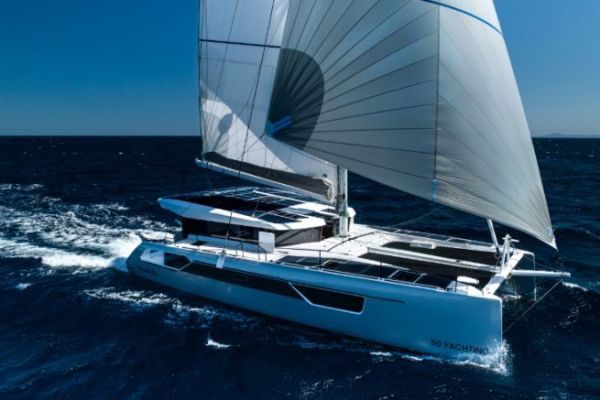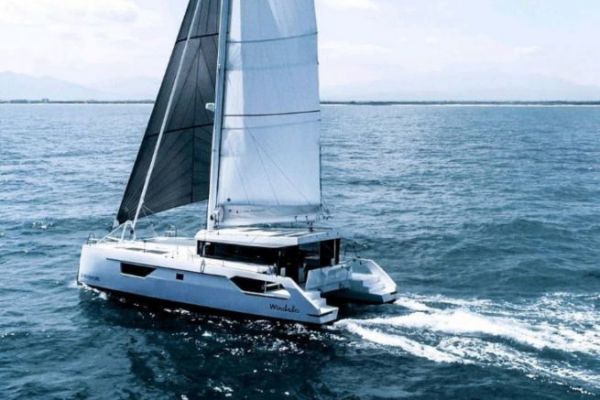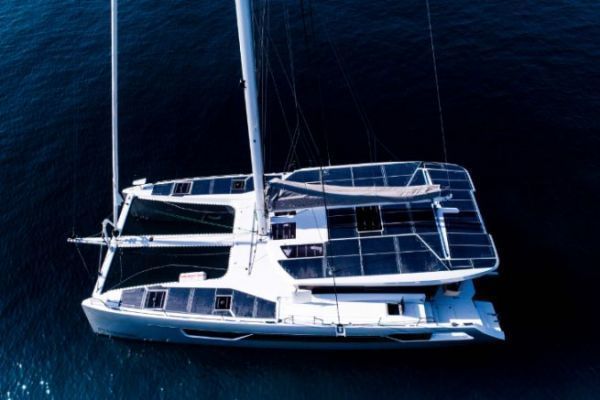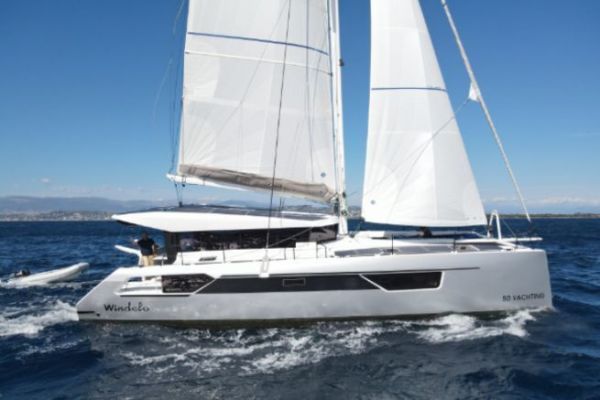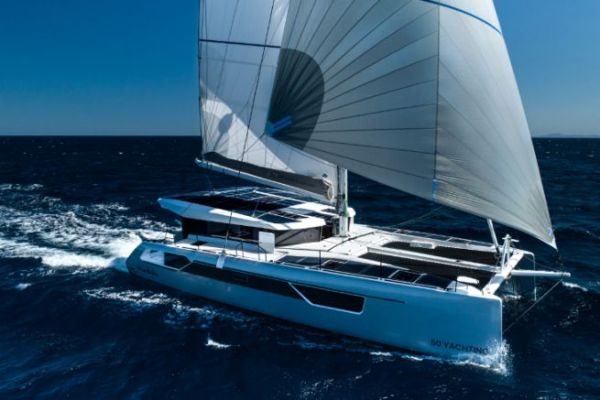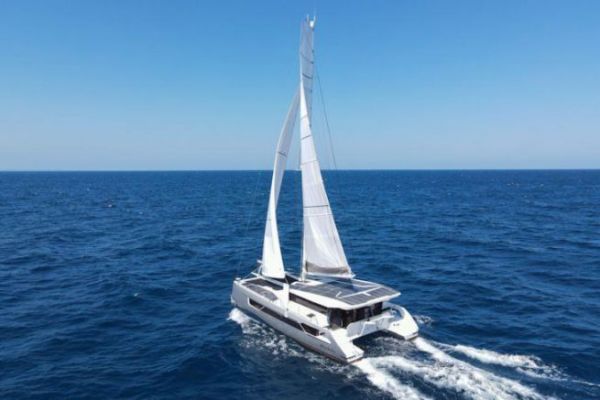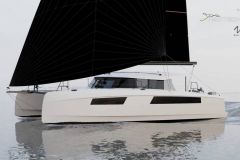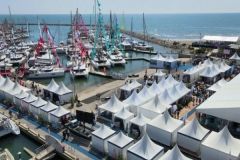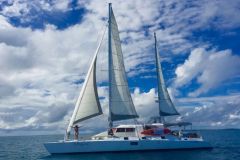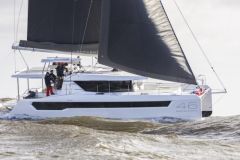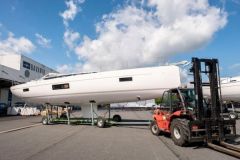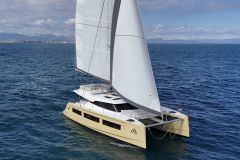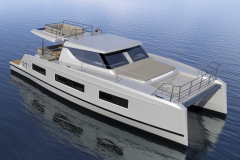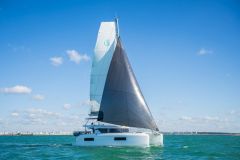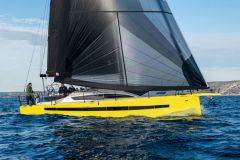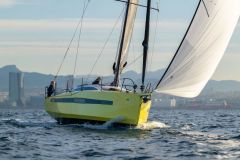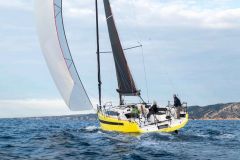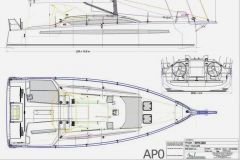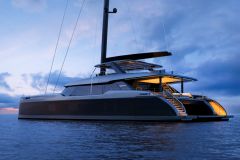Thanks to the use of basalt fiber and even with the weight of the batteries, the catamaran retains a reasonable light weight of 11.2 tons. As a result, Windelo has provided the 50 with an upwind area of 184 m2 (1,980 sqft) and a downwind area of 253 m2 (2,723 sqft) as standard, more than sufficient for fast cruising.
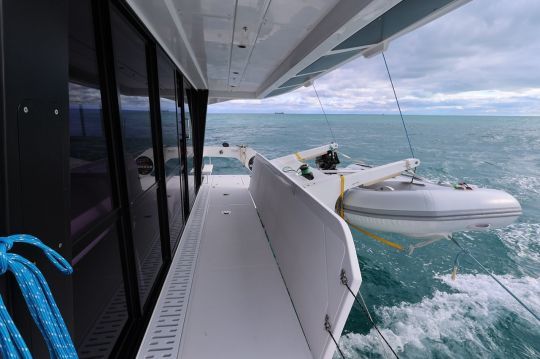
On the day of our test run, between Miami and Fort Lauderdale, we encountered some difficult conditions, with 15 to 20 knots of wind, gusts to 22 / 23 knots and, above all, swells of 8 to 10 ft at times.
A boat really easy to handle
In these conditions, not always easy to achieve performance, but the Windelo certainly doesn't fall short of the mark. In such conditions, with the solent and a reef in the mainsail, the boat keeps going at between 7 and 8 knots. In fact, thanks to its daggerboards, the Windelo is capable of sailing quite high upwind - a very good point.
To get a feel for the boat's capabilities, we put in a few tacks in these rough seas. In 18 knots, still with the solent, at 60° to the wind, we maintain a speed of almost 8 knots, which is very decent.
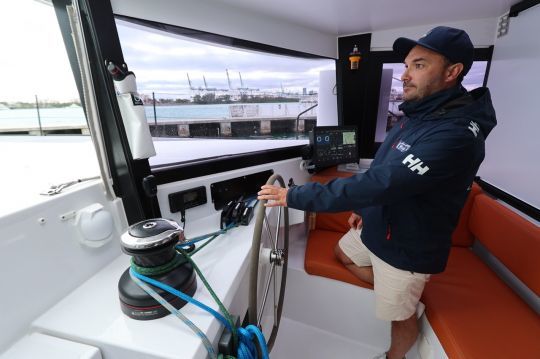
To give the catamaran a bit of a push, we decide to put the Code 0. A good idea, because with 20 knots of wind, staying at a 60° angle, our speed climbs to 11 knots, which is more than correct in heavy seas. however, the wind picks up a little and it becomes difficult to stay on course. So we headed back under the Solent. Stephane Groves, the brand's executive director, tells me that in good conditions with a Gennaker, they've already reached 24 knots. Impossible to verify today, but given the boat's power and responsiveness, this seems fairly credible.
Another positive point is that, thanks to the self-tacking solent, tacking and gybing are carried out quickly and effortlessly. Of course, the sails set can be extensively customized, and you can of course add a spynnaker or other sails.
A performant electrical system and a boat that is almost self-sufficient
The other feature of the Windelo 50 is its electric drive system, with two 20 kW motors powered by a set of 1120 Ah 48-volt batteries. Windelo claims a range up to 3 hours 45 minutes at 6 knots. This is more than enough time to sail in and out of the marina.

To recharge the batteries, Windelo can rely on its solar panels, which total 6,000 watts, and on the engine propeller, which acts as a hydrogenerator, also recharging the batteries. On paper, these various devices make the Windelo more or less self-sufficient. To fully recharge the batteries with the solar panels, you need 17 hours of sunshine, but the important point is that the energy reserve is so large that the boat almost never runs out of batteries. In talking to the owners, who live aboard, they tell me that they have never run out of batteries. Just in case, there's still the 17.9 kW generator and, of course, the possibility of recharging the whole battery park once in the marina. For long-distance cruising, we can even imagine adding a wind turbine. In terms of use, it's exactly the same as with an internal combustion engine, but without the noise.
